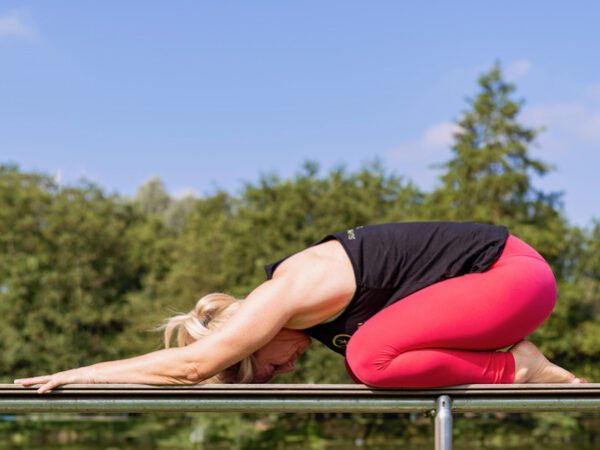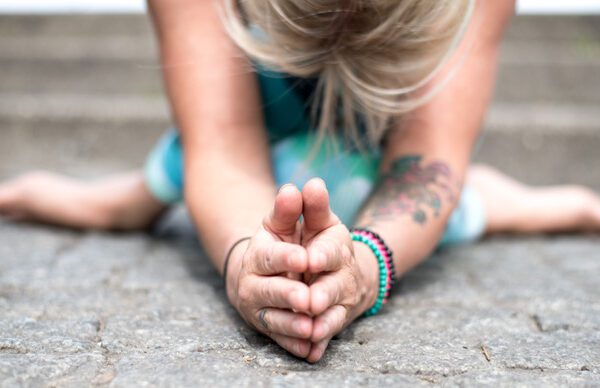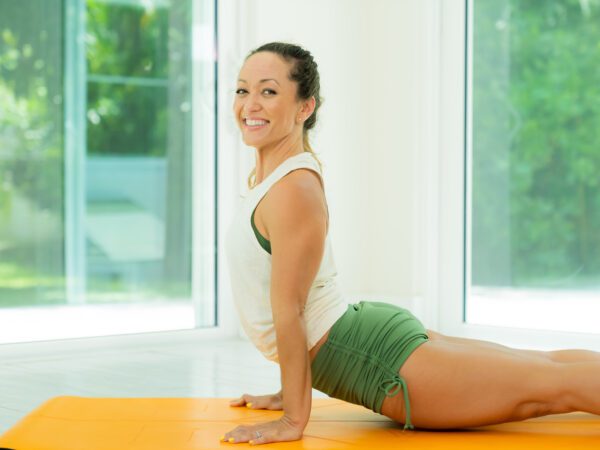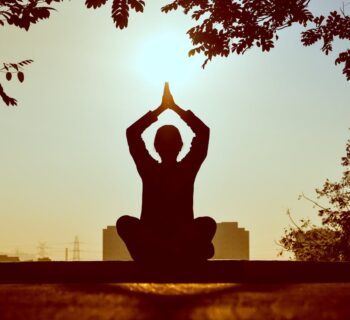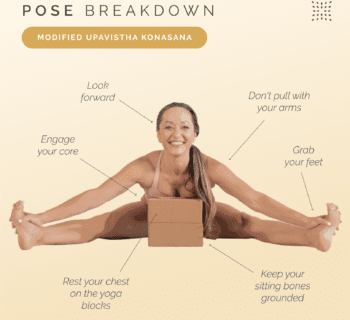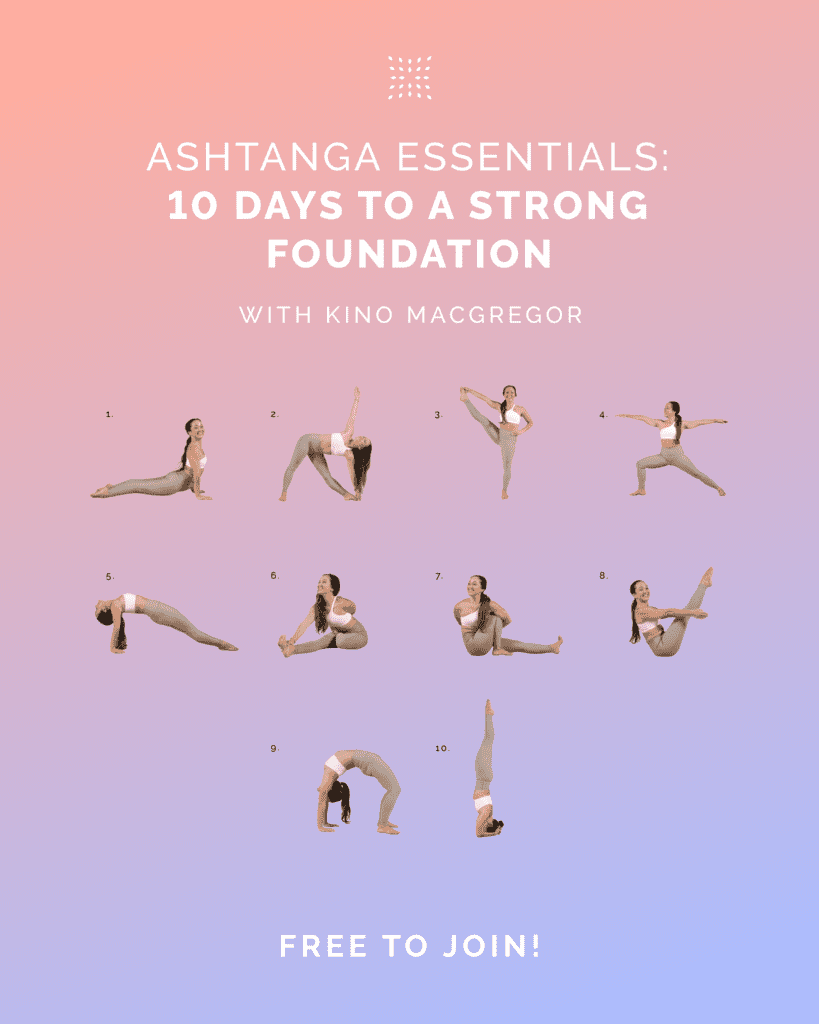Welcome to the world of inversions in yoga! If you’re ready to defy gravity and take your practice to new heights, you’ve come to the right place. Inversions in yoga, such as shoulderstands, headstands, and handstands, not only challenge your physical strength and balance, but they also offer a multitude of benefits for both the body and mind. In this article, we’ll explore the power of inversions in yoga and how they can transform your practice. Whether you’re a seasoned yogi or just starting out, get ready to unlock the potential of inversions in yoga and discover a whole new perspective on your practice. Let’s dive in!
The Benefits of Inversions in Yoga
Inversions in yoga offer a wide range of benefits for both the body and mind. Physically, inversions help to strengthen the core, arms, and shoulders, while improving balance and stability. They also increase blood flow to the brain, which can enhance cognitive function and improve focus. Mentally and emotionally, inversions have a calming effect on the nervous system, reducing stress and anxiety. They can also boost confidence and cultivate a sense of empowerment. Whether you’re looking to challenge yourself physically or find inner peace, incorporating inversions into your yoga practice can be a transformative experience.
Physical Benefits of Inversions
Inversions happen when your head is below your hips. That means that some poses that you might not think of like standing forward fold (uttanasana), bridge pose, down dog (adho mukha svanasana), and legs up the wall are inversions. Not all inversions have to be as rigorous as forearm balance and handstand. Practicing inversions in yoga offers a variety of physical benefits, including:
Strengthening the Core: Inversions engage the core muscles, including the abdominals and lower back, helping to build strength and stability in this area.
Improving Balance and Stability: Inversions require a strong sense of balance and stability, which can be developed through regular practice. This can improve overall coordination and body awareness.
Increasing Upper Body Strength: Inversions, such as headstands and handstands, require significant upper body strength, particularly in the arms, shoulders, and upper back. Regular practice can help to build and tone these muscles.
Enhancing Spinal Health: Inversions help to decompress the spine, relieving pressure on the discs and promoting spinal alignment. This can improve posture and reduce the risk of back pain.
Boosting Circulation: When you invert, blood flow to the brain increases, which can improve oxygenation and nutrient delivery to the brain cells. This can enhance cognitive function and improve mental clarity.
Stimulating the Lymphatic System: Inversions help to stimulate the lymphatic system, which is responsible for removing waste and toxins from the body. This can support immune function and detoxification.
Improving Digestion: Certain inversions, such as legs-up-the-wall pose, can help to improve digestion by promoting blood flow to the abdominal area and stimulating the digestive organs.
Increasing Energy and Vitality: Inversions have an energizing effect on the body, helping to combat fatigue and increase overall vitality. Remember to always practice inversions under the guidance of a qualified yoga teacher and listen to your body to ensure safety and proper alignment.
Mental and Emotional Benefits of Inversions
In addition to the physical benefits, practicing inversions in yoga can have numerous mental and emotional benefits, including:
Stress Reduction: Inversions have a calming effect on the nervous system, helping to reduce stress and anxiety. The change in perspective and the focus required during inversions can help to shift attention away from daily worries and promote a sense of relaxation.
Increased Focus and Concentration: Inversions require concentration and mental focus to maintain balance and stability. Regular practice can improve overall focus and enhance cognitive function.
Boosted Mood and Emotional Well-being: Inversions stimulate the release of endorphins, the “feel-good” hormones, which can elevate mood and promote a sense of well-being. They can also help to alleviate symptoms of depression and anxiety.
Enhanced Self-confidence: Successfully practicing inversions can boost self-confidence and self-esteem. Overcoming the fear and challenges associated with inversions can create a sense of accomplishment and empowerment.
Improved Body Awareness: Inversions require a heightened sense of body awareness and proprioception. This increased awareness can extend beyond the yoga mat, helping you to better understand and connect with your body in everyday life.
Cultivation of Patience and Perseverance: Inversions can be challenging and may require time and practice to master. Regularly working on inversions can cultivate patience, perseverance, and a growth mindset.
Mindfulness and Present Moment Awareness: Inversions demand full presence and attention to maintain balance and stability. This can help to cultivate mindfulness and present moment awareness, allowing you to fully immerse yourself in the practice.
Emotional Release and Letting Go: Inversions can create a sense of release and letting go, both physically and emotionally. They can help to release tension and stagnant energy, promoting a sense of lightness and freedom.Remember to approach inversions with patience, respect your body’s limits, and always practice under the guidance of a qualified yoga teacher.
How to Safely Approach Inversions
When it comes to approaching inversions in yoga, safety should always be a top priority. Inversions, such as headstands and handstands, can be exhilarating and transformative, but they also require proper technique, strength, and alignment to avoid injury. In this section, we will explore essential guidelines and tips to safely approach inversions in your yoga practice. By building strength, understanding proper alignment, and utilizing props and modifications, you can gradually and safely progress in your inversion practice. So, let’s dive in and discover how to approach inversions with confidence and mindfulness.
Building Strength and Stability
Inversions in yoga are not only impressive to look at, but they also offer a fantastic opportunity to build strength and stability throughout the body. When practicing inversions, such as headstands and handstands, various muscle groups are engaged, leading to increased strength and stability over time.
First and foremost, inversions require a strong core. The core muscles, including the abdominals, obliques, and lower back, play a crucial role in maintaining balance and control during inversions. As you practice inversions regularly, these muscles are continuously activated and strengthened, leading to improved core stability and overall body strength.
Additionally, inversions heavily rely on the strength of the arms, shoulders, and upper back. These areas are responsible for supporting the weight of the body and maintaining proper alignment. Regular practice of inversions helps to develop and tone these muscles, leading to increased upper body strength and stability.
Furthermore, inversions also engage the muscles of the legs and glutes. These muscles work together to provide a solid foundation and support the body’s inverted position. As you continue to practice inversions, you’ll notice improved leg and glute strength, which contributes to overall stability and balance.
It’s important to note that building strength and stability in inversions takes time and patience. It’s essential to progress gradually, listening to your body and respecting its limits. Starting with preparatory exercises and gradually working your way up to full inversions can help you develop the necessary strength and stability safely.
By incorporating inversions into your yoga practice, you can enjoy the benefits of increased strength and stability throughout your entire body. So, embrace the challenge, stay consistent, and watch as your strength and stability soar to new heights.
Proper Alignment and Technique
Proper alignment and technique are crucial when it comes to practicing inversions in yoga. Inversions, such as headstands and handstands, require a solid foundation and precise alignment to ensure safety and maximize the benefits of the pose. Here are some key points to keep in mind:
Establish a Strong Foundation: Start by setting up a stable foundation. In headstands, ensure that your forearms are firmly planted on the mat, shoulder-width apart. For handstands, place your hands shoulder-width apart, with fingers spread wide for optimal stability. Grounding through the foundation creates a solid base for your inversion.
Engage the Core: Activate your core muscles by drawing your navel towards your spine. This engagement helps to stabilize your body and maintain balance during inversions. A strong core also helps to protect your lower back and maintain proper alignment.
Stack the Joints: Proper alignment is essential to avoid strain or injury. In headstands, align your head, neck, and spine in a straight line. Avoid sinking into the shoulders or collapsing the neck. In handstands, stack your wrists, elbows, and shoulders directly above each other to maintain a stable and aligned position.
Engage the Shoulders and Upper Back: In both headstands and handstands, actively engage the muscles of the shoulders and upper back. Draw the shoulder blades down the back and broaden across the collarbones. This engagement helps to stabilize the shoulders and create a strong base of support.
Maintain a Neutral Spine: Keep your spine in a neutral position during inversions. Avoid overarching or rounding the back excessively. A neutral spine helps to distribute weight evenly and maintain proper alignment throughout the pose.
Use the Breath: Focus on deep, steady breaths while inverting. The breath helps to calm the mind, maintain focus, and provide stability. Avoid holding your breath or shallow breathing, as this can create tension and instability.
Practice Mindful Transitions: When transitioning into and out of inversions, move slowly and mindfully. Maintain control and awareness of your body throughout the process. This approach reduces the risk of injury and allows you to refine your technique. Remember, it’s essential to practice inversions under the guidance of a qualified yoga teacher, especially when learning proper alignment and technique. They can provide personalized guidance and adjustments to ensure your safety and progress in your inversion practice.
Using Props and Modifications
Props and modifications can be incredibly helpful when practicing inversions in yoga, especially for beginners or those working on building strength and confidence. Here are some ways to incorporate props and modifications into your inversion practice:
Wall Support: Utilize a wall for support and stability during inversions. For headstands, position yourself facing the wall and use it as a guide to help maintain balance and prevent toppling over. In handstands, practice with your back against the wall to provide support and build strength. Gradually work on finding balance away from the wall as you gain confidence.
Yoga Blocks: Place yoga blocks under your hands to elevate the ground and provide additional support during inversions. This can be particularly helpful for those with limited flexibility or strength. Blocks can help you find proper alignment and build strength in the arms and shoulders.
Straps or Belts: Use a strap or belt to assist with alignment and stability in inversions. For headstands, wrap the strap around your upper arms to help keep them parallel and prevent them from splaying out. In handstands, a strap can be used to create a loop around the upper arms, providing a tactile cue to engage the shoulders and maintain proper alignment.
Blankets or Cushions: Place a folded blanket or cushion under your head or forearms to provide padding and support during inversions. This can help alleviate pressure on sensitive areas and make the pose more comfortable. Blankets can also be used to create a soft landing surface when practicing kick-up drills or transitioning in and out of inversions.
Partner Assistance: Practicing inversions with a partner can offer additional support and guidance. They can provide physical assistance, spotting, and help you find proper alignment. Partner inversions can be a fun and safe way to explore and deepen your inversion practice. Remember, props and modifications are meant to support and enhance your practice, so choose the ones that feel right for you. As you gain strength and confidence, gradually reduce the reliance on props and explore the full expression of inversions. Always listen to your body, practice with mindfulness, and consult with a qualified yoga teacher for personalized guidance and modifications.
Learning Headstands and Handstands
Headstands and handstands are two inversions in yoga that can take your practice to new heights, quite literally. These powerful poses not only challenge your physical strength and balance but also offer a multitude of benefits for both the body and mind. In this section, we will explore the art of headstands and handstands, providing you with a glimpse into the techniques, benefits, and tips to help you master these inversions. Whether you’re a beginner or an experienced yogi looking to refine your practice, get ready to defy gravity and unlock the transformative power of headstands and handstands. Let’s dive in and explore the world of upside-down yoga!
Step-by-Step Guide to Headstands
Here is a step-by-step guide to help you safely and effectively practice headstands:
Warm-up: Begin by warming up your body with a few rounds of Sun Salutations or other gentle yoga poses to prepare your muscles and joints for the inversion.
Find a Stable Foundation: Start by kneeling on your mat with your forearms parallel to each other, elbows shoulder-width apart. Interlace your fingers, creating a stable base for your headstand.
Place the Crown of Your Head: Lower the crown of your head onto the mat, positioning it between your interlaced fingers. Your head should be firmly supported, and the back of your head should be cradled in your hands.
Lift Your Hips: Tuck your toes under and lift your hips up, coming into a dolphin pose. Walk your feet closer to your upper body, keeping your legs straight and your core engaged.
Engage Your Core: Activate your core muscles by drawing your navel towards your spine. This engagement will help you maintain balance and stability throughout the pose.
Lift One Leg: Slowly lift one leg off the ground, extending it towards the ceiling. Keep your leg engaged and toes pointed.
Lift the Other Leg: Once you feel stable with one leg lifted, slowly lift the other leg off the ground, extending it towards the ceiling. Keep both legs engaged and aligned.
Find Balance: As both legs are lifted, focus on finding your balance in the headstand. Engage your core, press firmly through your forearms, and maintain a steady gaze to help you stay centered.
Hold the Pose: Stay in the headstand for a few breaths, gradually increasing your hold time as you build strength and confidence. Remember to breathe deeply and maintain a steady breath throughout the pose.
Come Out of the Pose: To come out of the headstand, slowly lower one leg at a time, returning to the dolphin pose. From there, gently release your knees to the mat and rest in Child’s Pose to allow your body to recover. Remember, practicing headstands requires patience, practice, and proper alignment. It’s essential to approach this pose under the guidance of a qualified yoga teacher, especially if you’re a beginner. They can provide personalized adjustments and modifications to ensure your safety and progress in your headstand practice.
Mastering Handstands: Tips and Techniques
Here are some tips, techniques, and instructions to help you successfully practice handstands:
Warm-up: Begin by warming up your body with a few rounds of Sun Salutations or other dynamic movements to prepare your muscles and joints for the handstand.
Build Strength: Strengthen your upper body, core, and arms through exercises such as plank pose, dolphin pose, and chaturanga. Building strength in these areas will provide a solid foundation for your handstand.
Find a Wall: Start practicing your handstand with the support of a wall. Place your hands on the floor about shoulder-width apart, facing away from the wall. Walk your feet up the wall, keeping your body in an inverted “V” shape. This will help you get comfortable with the sensation of being upside down and build confidence.
Engage Your Core: Activate your core muscles by drawing your navel towards your spine. This engagement will help you maintain balance and stability during the handstand.
Kick Up: From the wall-supported position, bend one knee and kick the other leg up towards the ceiling. Use the momentum from the kick to lift your other leg off the wall and extend both legs fully into the handstand position. Keep your legs engaged and toes pointed.
Press Through Your Hands: As you kick up, press firmly through your hands, spreading your fingers wide and distributing your weight evenly. This will help you maintain stability and control in the handstand.
Engage Your Shoulders: Actively engage the muscles of your shoulders and upper back by drawing your shoulder blades down your back. This engagement will help you stabilize your shoulders and maintain proper alignment.
Find Balance: Once in the handstand position, focus on finding your balance. Engage your core, press firmly through your hands, and maintain a steady gaze to help you stay centered. Adjust your weight distribution and engage your core muscles to make small adjustments and maintain balance.
Practice Against the Wall: As you gain confidence and strength, practice kicking up into a handstand without the support of the wall. However, keep the wall nearby as a safety measure. Gradually work on finding balance away from the wall, using it only for occasional support or as a safety net.
Practice Regularly: Consistency is key when it comes to mastering handstands. Practice regularly, even if it’s just for a few minutes each day. Over time, your strength, balance, and confidence will improve.
Remember, practicing handstands can be challenging, so it’s important to approach them with patience and respect for your body’s limits. Always practice under the guidance of a qualified yoga teacher, especially when learning proper alignment and technique. They can provide personalized adjustments and modifications to ensure your safety and progress in your handstand practice.
In conclusion, inversions in yoga offer a world of possibilities for both the body and mind. From the exhilarating challenge of defying gravity to the transformative benefits they provide, inversions have the power to take your yoga practice to new heights.
So, embrace the power of inversions in yoga and unlock the potential within you. Let go of fear, trust in your abilities, and enjoy the journey of defying gravity. Whether you’re mastering headstands, handstands, or exploring other variations, inversions have the ability to transform your practice and your perspective. So, take a leap, find your balance, and let the magic of inversions unfold. Namaste.
Are you looking for more guidance on your yoga journey? Sign up for Omstars to get access to thousands of yoga classes in the comfort of your own home. Click here to start your subscription.
Photo by Johnathan Macedo on Unsplash



